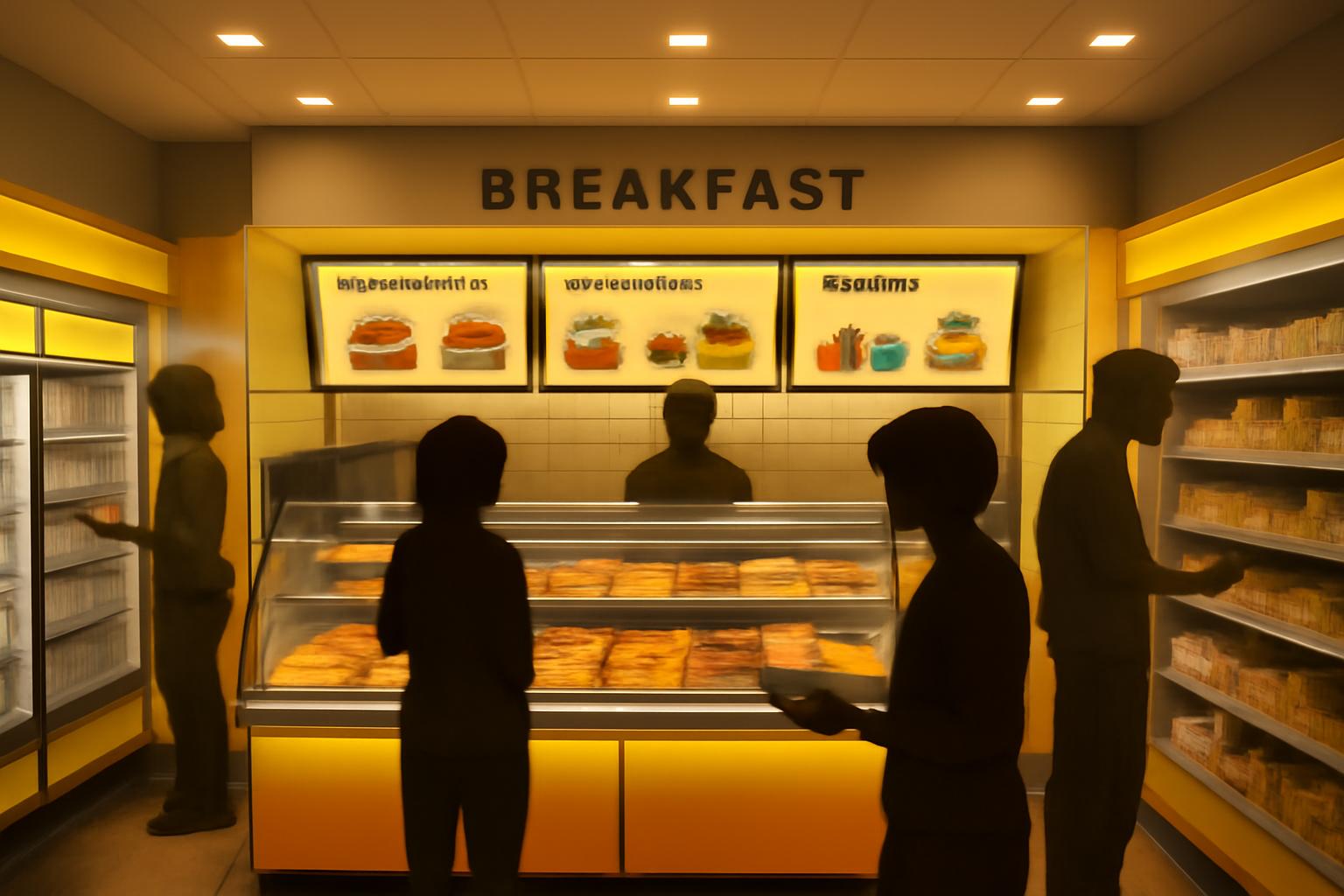Convenience Stores Challenge Fast-Food Breakfast Dominance
Convenience stores have steadily eroded the market share of fast-food chains in the breakfast segment, according to recent data from market research firm Circana. In the three months ending July 2025, visits to food-forward convenience stores increased by 9%, while fast-food breakfast traffic rose a modest 1%.
David Portalatin, Circana’s senior vice president and foodservice industry advisor, highlighted that convenience stores have been expanding their footprint in foodservice, with the morning meal emerging as a particularly strong area. This trend is driven largely by convenience stores that emphasize fresh, prepared foods, such as Wawa and Casey’s General Store.
Changing Consumer Habits and the Breakfast Battle
For decades, fast-food chains like McDonald’s have sought to attract consumers away from home breakfasts, banking on convenience and distinctive menu items. Yet, Portalatin notes that 87% of morning food and beverage consumption still originates from consumers’ own refrigerators or pantries, indicating significant room for growth in the out-of-home breakfast market.
Pre-pandemic, convenience stores began to gain traction, with regional chains enhancing their foodservice offerings by adopting strategies similar to fast-food competitors. While pandemic-related lockdowns temporarily slowed this momentum, food-forward convenience stores have regained ground in recent months.
McDonald’s remains the dominant quick-service breakfast player, but its morning visits have declined from 33.5% of total traffic in early 2019 to 29.9% in the first half of 2025, according to Placer.ai data. CEO Chris Kempczinski acknowledged in a July earnings call that breakfast is the most economically sensitive daypart, with consumers more likely to skip it or eat at home during economic stress.
Convenience Stores Innovate and Expand
Convenience stores are increasingly viewed as viable alternatives to fast-food breakfast options. A 2025 survey by Intouch Insight found that 72% of consumers considered convenience stores a real substitute for fast-food chains, up from 56% a year prior. This shift is attributed to stores’ broader product variety, including coffee, energy drinks, smoothies, and snacks alongside made-to-order breakfast items.
Chains like Wawa have capitalized on this trend, growing their customer base by 11.5% since 2022, while fast-food stalwarts McDonald’s, Burger King, and Wendy’s saw a combined decline of 3.5%, according to data from Indagari. Casey’s General Store, the third-largest convenience store chain in the U.S., reported 5.6% same-store sales growth in prepared foods and beverages in the quarter ending July 31, driven in part by its popular breakfast pizza.
Industry Outlook and Consumer Preferences
Industry experts suggest that while price remains a factor, quality is the ultimate differentiator for consumers choosing breakfast options. Portalatin emphasized that convenience stores with superior food quality are positioned to outperform competitors.
Fast-food chains are now looking to their convenience store rivals for inspiration, exploring innovations in early morning offerings and late-night sales strategies. Jeff Lenard, spokesperson for the National Association of Convenience Stores, noted this role reversal in competitive dynamics.
As consumer preferences evolve amid economic pressures, the breakfast segment remains a contested and dynamic space, with convenience stores leveraging food quality and variety to capture market share from traditional fast-food outlets.
FinOracleAI — Market View
The growing preference for convenience stores over fast-food chains in the breakfast segment signals a potential shift in consumer spending patterns. Convenience stores’ ability to offer diverse, fresh, and convenient food options aligns well with current consumer demands for value and variety amid economic uncertainty. However, fast-food chains retain significant brand loyalty and scale advantages.
Investors should monitor how fast-food operators adapt their breakfast menus and pricing strategies in response to this competitive pressure. Additionally, consolidation moves like RaceTrac’s acquisition of Potbelly warrant attention for potential strategic shifts in the convenience store and quick-service restaurant sectors.
Impact: neutral













